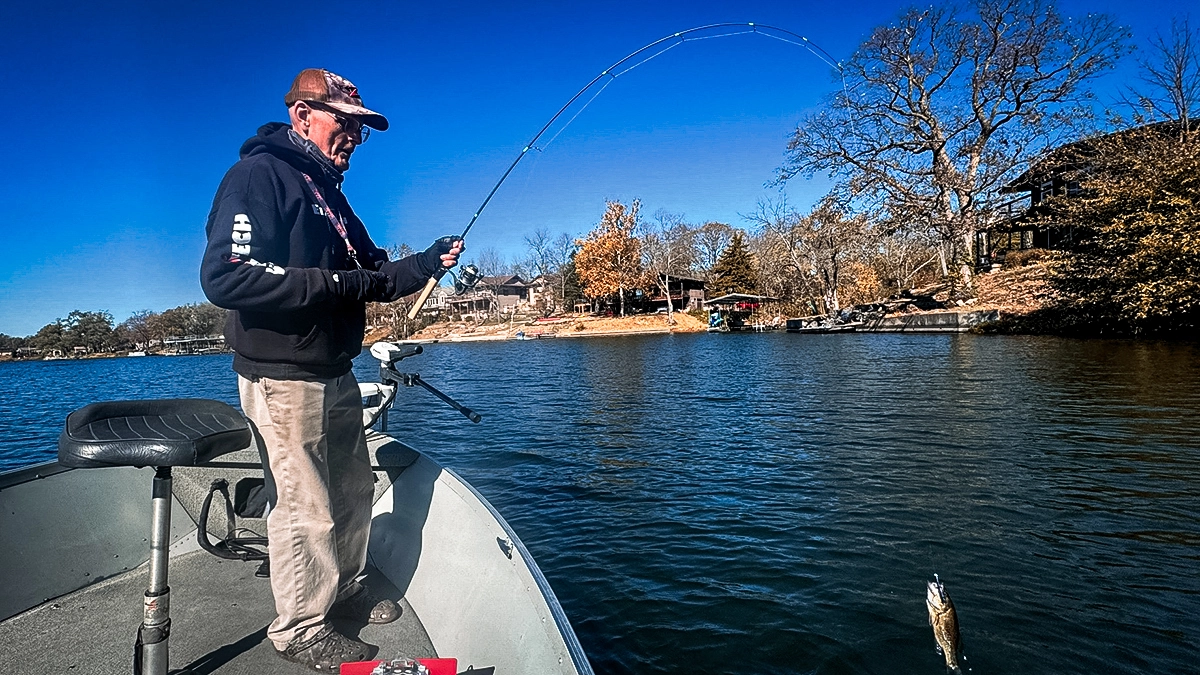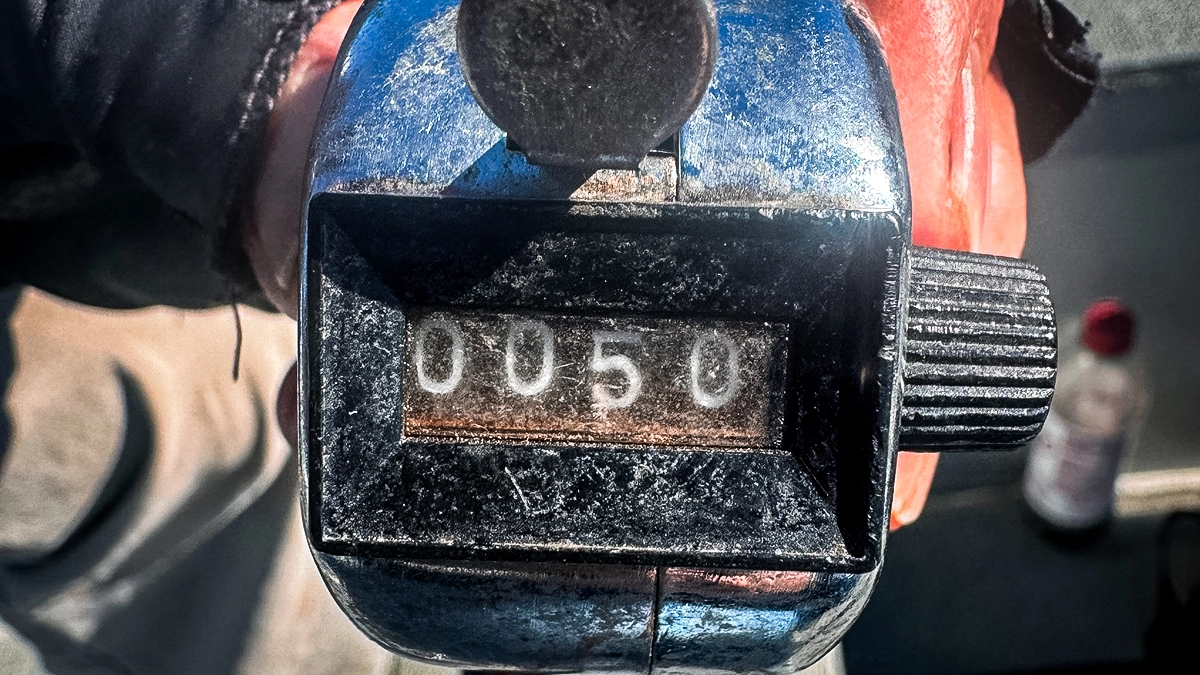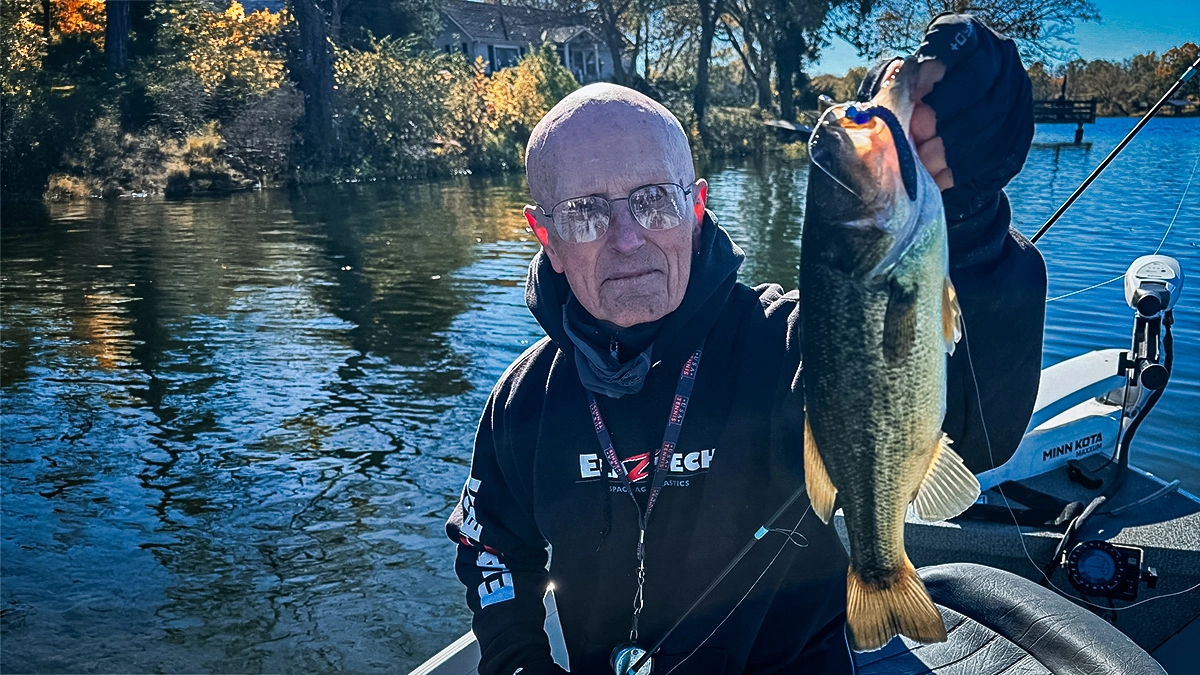The first thing you notice when you step onto Ned Kehde’s boat is what’s missing. There’s no high-dollar electronics like LiveScope to be found, just an old flasher unit that he seldom uses. There’s no monstrous outboard motor, just an old tiller style 40-horsepower engine; no modern trolling motor with Spot Lock or other features, just an old hand-steering model.
If you’re looking for an exhibit of what money can buy you in bass fishing, you’ve come to the wrong place.
Kehde, 84, is a minimalist. He is living proof that you don’t have to drain your bank account to catch a lot of bass. He prefers going old-school and still catches more bass than many anglers could imagine. He takes pride in being frugal.
“Since 1996, I have spent $15,575 on boat, trailer, trolling motors, depth finders and outboard engines,” said Kehde, who is known nationally for his finesse fishing tactics. “I grew up in an era when people were coming out of the Depression, and spending a lot of money on things went against the grain.”

Kehde knows that a frugal approach can pay big dividends. Consider an outing last week to a small community lake in northeast Kansas. Moments after Kehde launched his 16 1/2-foot Alumacraft fishing boat, we began catching fish, Ned style: casting small Z-Man baits on light-action tackle. None of them were worth bragging about. In fact, several were so small that they were barely bigger than the plastic bait.
But they still counted as a click on Kehde’s old-fashioned fish counter. By the time our 3 1/2-hour trip was done, we had caught and released 50 bass. Just another day in the life of the king of finesse.
“The tournament world revolves around a ‘bigger is better’ philosophy,” Kehde said. “Big fish, big boats, big money, big everything.
“I’m the antithesis of that. If I only caught three or four big bass in a day of fishing, it wouldn’t be nearly as much fun for me as catching 10 bass (of any size) an hour.
“The older I get, the more I’m like I was when I was a kid. I just want bites.”
Kehde gets plenty of them by employing what he labels Midwest Finesse Fishing techniques. He uses Z-Man baits that are as short as 1 3/4 inches long and as long as 4 inches. Because the baits are made of Elaztech, a material that makes them practically indestructible, he can use the same bait for days on end. Displaying a Finesse Worm Z that he had shortened to about 4 inches, he said, “This is the 12th day I have used this bait and I’ve caught 73 bass on it.”

During our trip, Kehde regularly jotted down notes of how, when, and where we caught fish along with the type of retrieve we used. He posts results of each trip in a blog for Z-Man and in emails to devoted finesse fishing followers.
He has sparked a nationwide craze over finesse fishing, and his followers proudly call themselves Ned Heads.
Kehde reacts humbly to such attention, preferring to focus attention on his fishing methods rather than himself.
He remembers a day when he too was caught up in tournament fishing, purchasing a Ranger bass boat and tossing large baits such as spinnerbaits, bass jigs, and jerkbaits to target large bass. But that phase lasted only two years. He sold the boat, went to an aluminum model, and “just went fishing.” While guiding at Lake of the Ozarks with bass-fishing legend Guido Hibdon, he discovered the virtues of fishing with light spinning tackle and small baits.
Harold Ensley, who had a long-running television show, introduced the fishermen to marabou jigs, and they used them to catch multiple bass while the cameras rolled.
They also used those techniques to get guide clients bites on days when the fishing was tough. Kehde later met Chuck Woods, the developer of the plastic Beetle, Beetle Spin, and Drew Reese. He was one of the first anglers to use plastic finesse baits in bass tournaments, and became even more convinced that small baits can produce mega results.
“A lot of people think finesse fishing for bass was invented on the West Coast,” Kehde said. “But we were doing it here in the Midwest long before they were.”
Ensley and Hibdon have passed away, but Kehde continues to fish with light tackle and small baits. You won’t find a baitcaster or large lures in his boat.

Today, he lives in Lawrence, Kansas, where the surrounding region is dotted with small community and state fishing lakes.
Kehde has settled into a pattern where he fishes from 10 a.m. to 2 p.m. virtually every time out, regardless of the season. He fishes throughout the year, as long as there is open water. A good day is when he and a fishing partner can catch and release 25 bass an hour. That, of course, is rare. But catching 50 bass on a trip is still relatively common.
That’s why Kehde is so devout in promoting finesse fishing. It is an ideal way to introduce beginners to the joys of bass fishing, he said.
He advises aspiring anglers to get started by fishing from the bank on farm ponds or other small impoundments, and he recommends they purchase inexpensive spinning rods and reels, small mushroom-style jig heads with No. 4 size hooks, and a few packages of Z-Man plastic baits.
That’s an inexpensive way to get started, yet a plan that often produces plenty of action.
It’s also effective for what he calls “old-codger” fishing.
“A lot of retirees don’t have the stamina to stand all day in a bass boat and cast big lures,” he said. “But they can downsize their boats and fish with these finesse baits for a few hours and still catch a lot of bass.”












